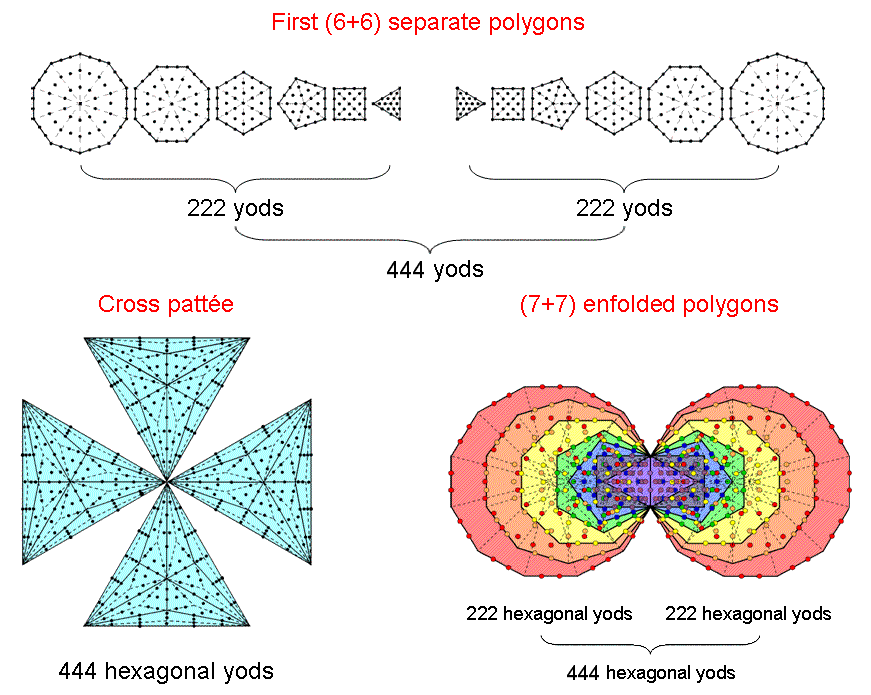
| << Previous 1... 10 11 [12] 13 14 ...39 Next >> |
#12 The number 444 is embodied in the cross
pattée, the first (6+6)
separate polygons & the inner Tree of Life

The cross pattée (often misidentified as the Maltese Cross) is a type of cross whose arms are broader at their ends and narrower at the centre. In one type, each arm is triangular, with a corner of each triangle meeting at the same point. When each triangle is a Type C triangle, in which each sector is divided into three sectors and each of these divided into three sectors that are then turned into tetractyses, the cross pattée contains 444 hexagonal yods. This is the number of hexagonal yods in the (7+7) enfolded polygons of the inner Tree of Life, there being 222 hexagonal associated with each set of seven polygons constituting half of the inner Tree of Life. 444 is also the number of yods in the two sets of its first six separate polygons, which, themselves, constitute a holistic system, each set having 222 yods. The appearance of this holistic parameter in the cross pattée is an example of the Tetrad Principle* at work, for it is four-fold in shape and the Type C triangle is the fourth in the sequence: tetractys→Type A triangle→Type B triangle→Type C triangle.
Examples of how cross pattée patterns of integers express holistic parameters like the dimension 248 of the superstring gauge symmetry group E8 are discussed in Article 52.
The cross pattée was sometimes used in the Medieval Age by two orders of knights, namely, the Knights Templar and the Teutonic Knights.
The Tetrad determines the Tree of Life parameter 222 because two joined, Type C squares have 222 hexagonal yods on the sides of their 72 tetractyses, the square being the simplest geometric symbol of the number 4 and the Type C square being the fourth in the sequence: square→Type A square→Type B square→Type C square:

* The Tetrad Principle is formulated in Article 1.